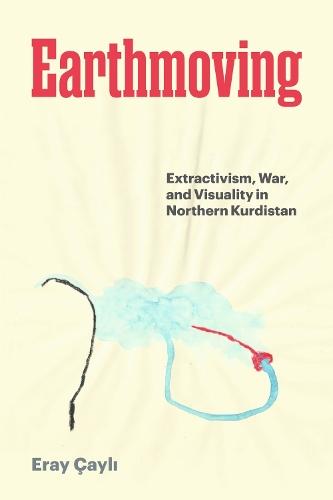Overview
Focuses on contemporary art and media to examine the role of visuals in environmental violence and war in Northern Kurdistan. Extractivism-exploiting the earth for resources-has long driven racial capitalism and colonialism. And yet, how does extractivism operate in a world where ecological and humanitarian sensibilities are unprecedentedly widespread? Eray Çaylı argues it does so by mobilizing these sensibilities in new ways. Extractivism is no longer only about moving the earth-displacing peoples, fossils, minerals, and waters-but also leaving those who witness this violent displacement sentimentally moved. Earthmoving conceptualizes this duality. Derived from Çaylı’s years-long work in Northern Kurdistan, home to the world’s largest stateless nation-rendered stateless by colonial policies since the nineteenth century-Earthmoving focuses on the 2010s, a decade that began with peace talks between Turkey and the Kurdish liberation movement but ended with war. The decade saw extractivism intensify in the region and images of its harm proliferate across art and media. Together with contemporary artists, Çaylı shows that images challenge extractivism both by making its harm visible and fostering self-reflexive and reciprocal collaboration that breaks with its valuation of the colonized and the racialized only in quantifiable and marketable terms.
Full Product Details
Author: Eray Çayli
Publisher: University of Texas Press
Imprint: University of Texas Press
Weight: 0.454kg
ISBN: 9781477332771
ISBN 10: 1477332774
Pages: 248
Publication Date: 31 October 2025
Audience:
Professional and scholarly
,
Professional & Vocational
Format: Hardback
Publisher's Status: Active
Availability: Not yet available

This item is yet to be released. You can pre-order this item and we will dispatch it to you upon its release.
Reviews
""Featuring rich empirical work and detailed analysis, Earthmoving is an important contribution to violence/trauma studies and of political geology. Eray Çaylı presents a rich array of material for his arguments, providing a clear direction to how to think about the intervention of the visual in the making of geophysical worlds. Among this material, Çaylı introduces the reader to underrepresented and visually engaging art projects, which themselves deserve bigger audiences. Earthmoving is undoubtedly a crucial pedagogical tool for reimagining agency in the recursive construction site of extraction and its political terrain."" - Kathryn Yusoff, Queen Mary University of London, author of Geologic Life: Inhuman Intimacies and the Geophysics of Race.
Author Information
Eray Çaylı is a professor of human geography with a focus on violence and security in the Anthropocene at the University of Hamburg. He is the author of Victims of Commemoration: The Architecture and Violence of Confronting the Past in Turkey and coeditor of Architectures of Emergency in Turkey: Heritage, Displacement and Catastrophe.



